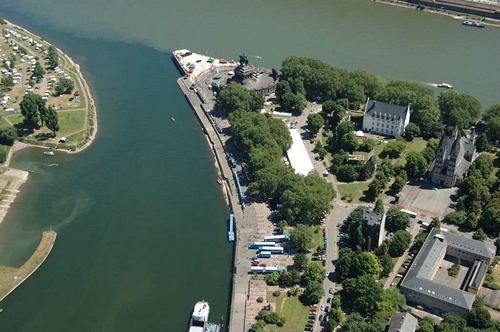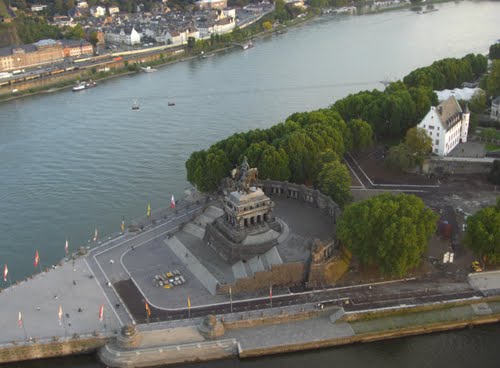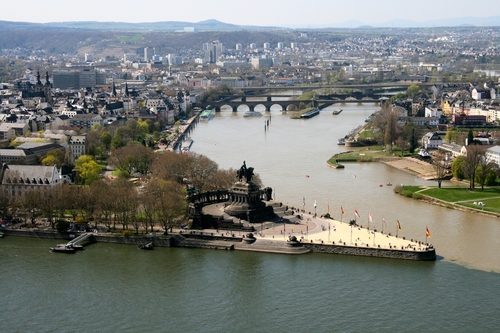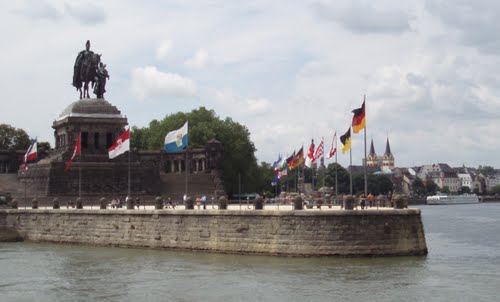Deutsches Eck is the name of a headland in Koblenz where the Moselle joins the Rhine. In 1897, nine years after the death of the German Emperor William I, the former emperor was honoured with a giant equestrian statue bearing an inscription quoting a German poem: Never will the Empire be destroyed, so long as you are united and loyal. Another inscription could be found at the statue dedicating it to “Wilhelm der Große” (William the Great).
In 1945, the statue was badly damaged by an American artillery shell. Soon afterwards it was completely taken down. The French military government planned to replace the old memorial with a monument for peace and understanding among nations, but this concept was never realized.
After the formation of the Federal Republic of Germany and the German Democratic Republic in 1949, the country was divided into a capitalist west and a communist east. In order to express the deep wish for a united Germany[citation needed], President Theodor Heuss turned the German Corner into a monument to German unity. As a result, the coats of arms of all German Länder (states), including those of former German territories such as Silesia, East Prussia and Pomerania, were installed. Replacing the destroyed equestrian statue, a German flag flew over the plaza.
After the Berlin Wall came down in November 1989, three concrete parts of the actual wall were installed next to the monument. On 3 October 1990, the emblems of the new federal states were added.









